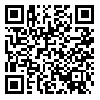Volume 6, Issue 3 (11-2018)
J Surg Trauma 2018, 6(3): 86-89 |
Back to browse issues page
MD, Assistant Professor, Department of Otorhinolaryngology, Faculty of Medicine, Birjand University of Medical Sciences, Birjand, Iran
Abstract: (3645 Views)
Introduction: Unwanted hair growth is a common cosmetic problem. The need for a rapid method with long-term relief has led to the discovery of various light source techniques. Regarding this, the present study was conducted to evaluate the effect of intense pulsed light (IPL) source on unwanted facial hair growth in the Iranian women suffering from hirsutism.
Methods: This clinical trial was conducted on 39 women with hirsutism. Data collection was performed by recording the demographic characteristics and skin type of the participants. The patients were subjected to five sessions of IPL treatment. The number of the remaining hair was counted at the end of each session; in addition, the effectiveness and side effects of the treatment were evaluated. The data were analyzed in SPSS software (version 13) using paired sample t-test. The p-value less than 0.05 was considered statistically significant.
Results: The results revealed an 85.6% reduction in hair follicles after the treatment. Furthermore, the mean number of hair follicles was reduced from 25.4 to 3.4 at the post-intervention stage (P<0.001). Additionally, eight patients experienced side effects, the most common of which was hyperpigmentation that was observed in 12.9% of the cases.
Conclusions: Based on the findings, IPL is a safe and effective method for removing unwanted facial hair among the Iranian women with skin type II. Given the high efficacy of IPL (85.6%) and its lack of significant side effects, IPLS can be recommended as a safe and reliable method for the treatment of hirsutism.
Methods: This clinical trial was conducted on 39 women with hirsutism. Data collection was performed by recording the demographic characteristics and skin type of the participants. The patients were subjected to five sessions of IPL treatment. The number of the remaining hair was counted at the end of each session; in addition, the effectiveness and side effects of the treatment were evaluated. The data were analyzed in SPSS software (version 13) using paired sample t-test. The p-value less than 0.05 was considered statistically significant.
Results: The results revealed an 85.6% reduction in hair follicles after the treatment. Furthermore, the mean number of hair follicles was reduced from 25.4 to 3.4 at the post-intervention stage (P<0.001). Additionally, eight patients experienced side effects, the most common of which was hyperpigmentation that was observed in 12.9% of the cases.
Conclusions: Based on the findings, IPL is a safe and effective method for removing unwanted facial hair among the Iranian women with skin type II. Given the high efficacy of IPL (85.6%) and its lack of significant side effects, IPLS can be recommended as a safe and reliable method for the treatment of hirsutism.
Type of Study: Research |
Subject:
General
Received: 2017/07/29 | Accepted: 2018/10/24 | Published: 2018/11/14 | ePublished: 2018/11/14
Received: 2017/07/29 | Accepted: 2018/10/24 | Published: 2018/11/14 | ePublished: 2018/11/14
| Rights and permissions | |
 |
This work is licensed under a Creative Commons Attribution-NonCommercial 4.0 International License. |


